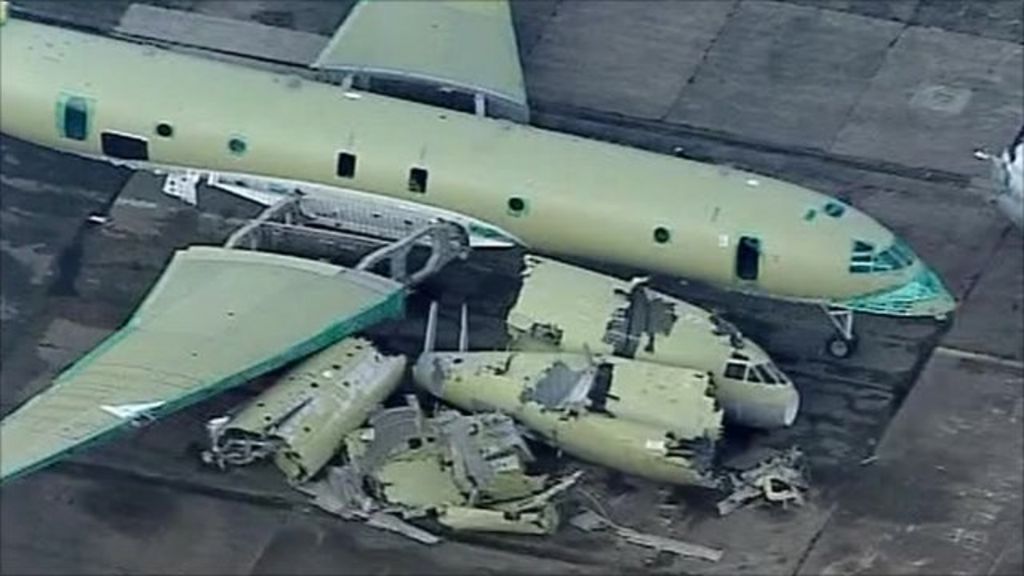A fast and loose thread on the broad history for the *sensible* reason why Nimrod MRA.4 was scrapped.
WARNING: Nimrod MRA.4 is an emotive subject. There is a lot of genuinely good work, blood, sweat, tears and lost lives behind the Tweets. Tread sensitively please.
WARNING: Nimrod MRA.4 is an emotive subject. There is a lot of genuinely good work, blood, sweat, tears and lost lives behind the Tweets. Tread sensitively please.
We& #39;ll skip to the point at which BAe& #39;s (not BAE& #39;s) proposal for Nimrod 2000 using Comet airframes had been accepted, but after the point at which tooling for new-build fuselages had been rejected in the 1990& #39;s.
There was a requirement for 21 aircraft to replace Nimrod MR.2 and without building new airframes as proposed there was a shopping trip to buy up all of the remaining Comet husks we could. Numbers vary, but we& #39;ll settle on 21 assumed complete kits plus bits for convenience.
We discovered we couldn’t put three of the airframes together without an unacceptable amount of sticky-back plastic after all from all of the husks and bits we’d bought from around the world, leaving a total 18 husks to work with.
Although the requirement remained 21 aircraft, just 18 magically became acceptable.
Someone then realises that the remaining 18 husks are not identical and that there are roughly 3 groups (Group names are my own):
a) Group A: 6 x husks;
b) Group B: 3 x husks; and
c) Group C: 9 x husks.
a) Group A: 6 x husks;
b) Group B: 3 x husks; and
c) Group C: 9 x husks.
[Insert very expensive wing problem history here]
It then begins to dawn on people that even within the groups, there& #39;s quite a bit variation. Airframe certification wasn& #39;t what it is today back in the Golden Age of Sail - ahem - Giolden Age of de Havilland Comets and tolerances were more of a set of guidelines than actuality.
[Insert even more expensive individual work per aircraft to fit modern tolerance grade components together with seemingly coachwork grade components]
The Haddon Cave report.
The Military Aviation Authority (MAA) comes into being.
MAA starts clamping down, rightfully, on older, unsafe airframes. Several Tornados fall short, as do some Harriers.
Despite receiving new wings, floors, etc., MRA.4 was still being built on old, not new-build, airframes.
Despite receiving new wings, floors, etc., MRA.4 was still being built on old, not new-build, airframes.
Only Group C - the group of 9 x husks - were actually fit for modern certification. Group B (3 x husks) needed a bit more work to achieve full certification. Group A (6 x husks) would need a *lot* of money to achieve certificates, money we& #39;d just spent on correcting the wings.
Agreement with the MAA that the 3 Group B husks are safe enough to be used for training and testing purposes, but not for Operation. Condition is they are brought up to spec as part of an ongoing upgrade program.
Group A (6 x husks) go into storage.
Group C (9 x husks) will be the number of aircraft we will actually have left for Operating.
Although the requirement remained 21 aircraft, just 12 magically became acceptable:
- Normally 9;
- Maybe 3 more if we brought them up to spec and certificated them or were allowed to deploy them in an emergency.
- Normally 9;
- Maybe 3 more if we brought them up to spec and certificated them or were allowed to deploy them in an emergency.
Growing bill being forecast for completing the 9 Operational aircraft, bringing the 3 Test/Train aircraft up to spec. And nobody& #39;s openly talking about whether the faults listed in Haddon Cave have all been resolved yet. Especially with the 3 testing and training aircraft.
Although the requirement remained 21 aircraft, just 9 magically became acceptable:
Someone sensible finally realises we will only ever have 9. They will possibly have Haddon Cave level flaws. We bought all of the available husks on the planet. We can never build more. We can& #39;t replace any. They will be increasingly expensive to maintain for 20 years.
MRA.4 cancellation.
A reminder that this was a fast and loose thread. Details assumed. There& #39;s a lot of actual history in between the Tweets.
/FIN

 Read on Twitter
Read on Twitter


